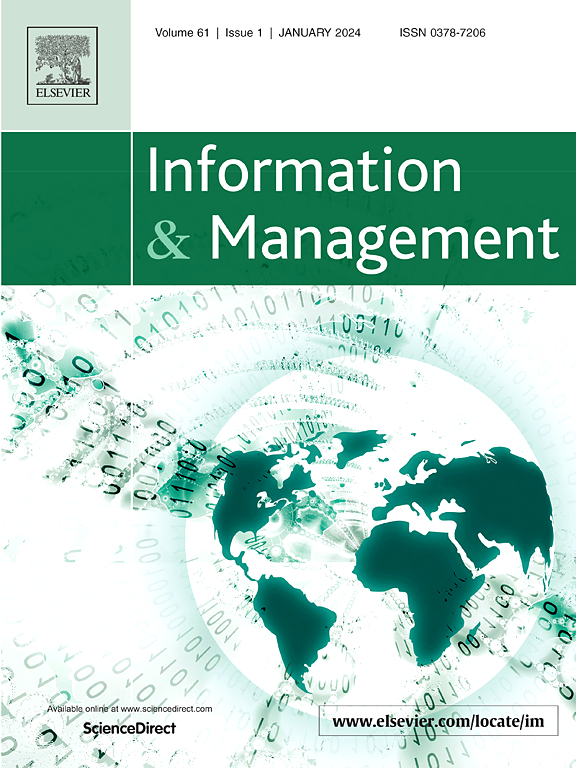GAI identity threat: When and why do individuals feel threatened?
IF 8.2
2区 管理学
Q1 COMPUTER SCIENCE, INFORMATION SYSTEMS
引用次数: 0
Abstract
The widespread application of generative artificial intelligence (GAI) and its ability to perform various tasks have raised concerns about identity threats. This study aims to investigate antecedents, behavioral consequences, and boundary conditions of GAI identity threat. We conduct a two-phase study using a mixed-methods approach. The qualitative phase aims to identify the critical factors that influence GAI identity threat. After coding 30 semi-structured interview transcripts, we find that GAI's high intelligence and human-like abilities facilitate three kinds of affordance that influence GAI identity threat: creative affordance, analysis affordance, and communication affordance. The quantitative phase, based on IT identity threat theory, constructs a research model to examine how the three types of affordance influence GAI identity threat, as well as identifying the behavioral consequences. An examination of survey data from 405 users indicates that GAI's creative affordance, analysis affordance, and communication affordance are associated with GAI identity threat, which may lead to users’ resistance behavior. Furthermore, GAI autonomy and user self-identity moderate the relationship between GAI affordances and GAI identity threat, respectively. This study identifies users’ negative psychological mechanisms when using AI, develops IT identity threat theory in the context of GAI, and provides implications for practitioners to reduce identity threats.
GAI身份威胁:个人何时以及为何感到威胁?
生成式人工智能(GAI)的广泛应用及其执行各种任务的能力引起了人们对身份威胁的担忧。本研究旨在探讨GAI身份威胁的前因、行为后果和边界条件。我们采用混合方法进行了两阶段的研究。定性阶段旨在确定影响GAI身份威胁的关键因素。在对30份半结构化访谈记录进行编码后,我们发现GAI的高智商和类人能力促进了三种影响GAI身份威胁的功能提供:创造性功能提供、分析功能提供和沟通功能提供。定量阶段,以IT身份威胁理论为基础,构建了一个研究模型,考察了这三种类型的提供性如何影响GAI身份威胁,并确定了行为后果。通过对405名用户的调查数据的分析发现,GAI的创意能力、分析能力和沟通能力与GAI身份威胁相关,并可能导致用户的抵抗行为。此外,GAI自主性和用户自我认同分别调节了GAI可视性和GAI身份威胁之间的关系。本研究识别了用户在使用人工智能时的消极心理机制,发展了人工智能背景下的IT身份威胁理论,并为从业者减少身份威胁提供了启示。
本文章由计算机程序翻译,如有差异,请以英文原文为准。
求助全文
约1分钟内获得全文
求助全文
来源期刊

Information & Management
工程技术-计算机:信息系统
CiteScore
17.90
自引率
6.10%
发文量
123
审稿时长
1 months
期刊介绍:
Information & Management is a publication that caters to researchers in the field of information systems as well as managers, professionals, administrators, and senior executives involved in designing, implementing, and managing Information Systems Applications.
 求助内容:
求助内容: 应助结果提醒方式:
应助结果提醒方式:


